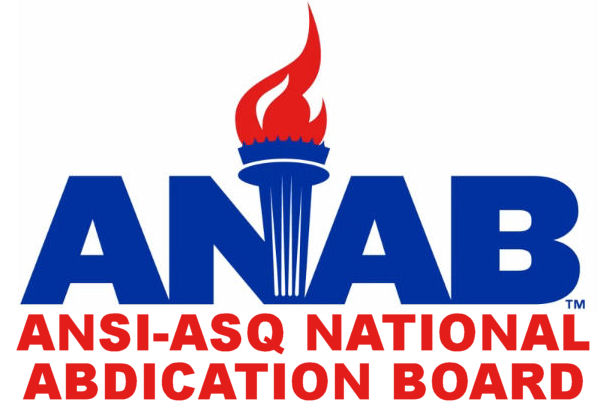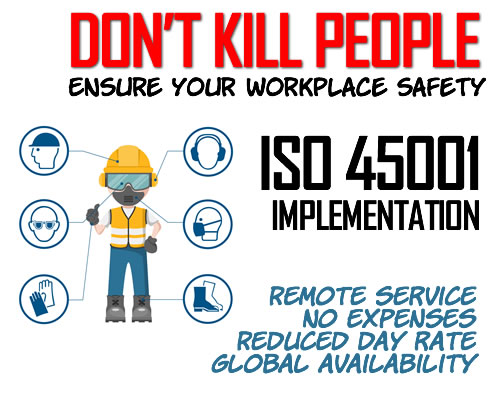Today marks an important day, although no one will ever remember it, and few will know what happened or understand the impact.
 Earlier today I took the first tentative steps towards testifying before the US Congressional House Committee on Science, Space and Technology on the massive problems facing the ISO 9001 and AS9100 certification schemes, targeting in particular the mismanagement by ANSI regarding both its standards developers and its accreditation body, ANAB. Despite being an entirely domestic affair, the groundwork being laid here in the US will impact on the entire world, affecting the every IAF-matrixed accreditation scheme player, as well as the entire ISO standards development process. It also begins to put in place various pieces necessary for an eventual complaint laid against ISO itself, on the grounds that it has violated World Trade Organization regulations against barriers to free trade.
Earlier today I took the first tentative steps towards testifying before the US Congressional House Committee on Science, Space and Technology on the massive problems facing the ISO 9001 and AS9100 certification schemes, targeting in particular the mismanagement by ANSI regarding both its standards developers and its accreditation body, ANAB. Despite being an entirely domestic affair, the groundwork being laid here in the US will impact on the entire world, affecting the every IAF-matrixed accreditation scheme player, as well as the entire ISO standards development process. It also begins to put in place various pieces necessary for an eventual complaint laid against ISO itself, on the grounds that it has violated World Trade Organization regulations against barriers to free trade.
Feeling A Little ANSI
Now, one doesn’t merely walk into the US Congress. It’s a complicated process, requiring numerous contacts and careful maneuvering through the maze of districts. political parties and representatives. Even then, it becomes an activity relying on the Committee’s willingness to hear the testimony, and then to fit it into the schedule. So there is a lot that can go wrong from here on out. But this may be the first time anyone has ever approached Congress with testimony against the ISO 9001 scheme.
The Committee on SST was selected not only because it is the most appropriate forum given the subject, but also because in 2012 ANSI President and CEO Joe Bhatia testified before them during a hearing on “Promoting Innovation. Competition, and Economic Growth: Principles for Effective Domestic and International Standards Development.” You can read the full transcript here.
In his testimony, Bhatia gave a glowing self-review of ANSI. Ignoring the fact that his testimony was basically an invitation to spam right in front of the US Congress, Bhatia may have gotten himself into hot water. During his gushing self-praise, he boldly declared:
The key to our nation’s continued success on the global stage is to make sure that:
1.) all US stakeholder needs and voices are taken into account;
2.) that we approach ISO and IEC with clear and strong national positions both from the technical and policy perspectives; and
3,) that we effectively leverage relationships with our partners internationally to gain support for these positions.
To that end, ANSI works with the US TAG Administrators to attract greater and diverse government and industry participation in ISO and IEC activities. To facilitate this greater level of engagement, ANSI will continue to work to improve access to publicly available information on TAG activities….
The day-to-day management by ANSI of its TAGs and ANSI show that nearly none of what he said was true. Let’s take a look.

ANSI CEO Joe Bhatia
Do As I Say, Not As I Say I Do
Regarding taking stakeholder needs and voices into account, the US TAG to TC 176 is notoriously closed to such input. Entire industries, from aerospace to automotive to oil, warned the TAG that its work on ISO 9001:2015 was going in the wrong direction. Nevertheless, the US TAG made barely a squeak of pushback against its UK counterparts, who pushed hard for a blind adherence to “Annex SL.”
Next, regarding approaching ISO with clear national positions, the US TAG leadership failed utterly to present a national position, and then did nothing to push back against the ISO Technical Management Board when it imposed Annex SL, in violation of global trade regulations. It went along like a doped puppy. There never was the presentation of a clear national position, because the TAG never really developed one.
Next, regarding leveraging relationships with other international mirror committees, the TAG failed to get international support for its position against the ISO 9001 draft, winning only seven countries’ support, and most of those won only by luck, and not by any lobbying actions by the US TAG. Decade after decade, under the weak leadership of Jack West and Alka Jarvis, ANSI has sat by and watched as nations such as Slovakia roll over the US and overrule our national positions. This is so ingrained, the leadership even has a pre-bottled excuse, that “it’s only one nation, one vote” and so therefore the US TAG has no ability to alter the votes of other nations. Clearly they ignored utterly the mandate of ANSI’s top executive.
Finally, regarding the TAGs ensuring “greater and diverse participation,” nothing could be further from the truth. TAG meetings are secret, and knowing the dates and locations “are a benefit of being a member,” according to TAG Administrator Julie Sharp. TAG Chair elections are entirely non-democratic, relying on a secret “nominating committee” which decides on a single candidate who then runs, unopposed, in a rigged “election.” TAG membership is controlled by the leadership, which wields influence over the admission of each potential member. And of course, the bulk of TAG work isn’t done at meetings at all, but through private email swaps between the leaders, outside of the influence or input of the general membership. This is why the final output never resembles at all the actual inputs of TAG members; the leadership never carries it over to the official US position.
 1001 Anabian Nights
1001 Anabian Nights
ANSI is also in a spot of bother when it comes to the management of ANAB, arguably the world’s second-most powerful accreditation body, and the only official one operating in the United States. Here is where things get a bit more complicated.
Under US Federal Acquisition Rules (FARs) and the Defense Federal Acquisition Regulation Supplement (DFARS), federal contracts cannot be “exclusionary.” That is, they must be offered to all eligible companies that are qualified to potentially provide the service or product being purchased by the US government. (This is a gross oversimplification, and there are a billion possible ways the Government can bypass this, but you get the point.)
Those provisions against exclusionary contracts can also be interpreted as ensuring the US government doesn’t give favor to any party mentioned in the contract. For example, the US government cannot require all federal contractors to buy their shirts from Macy’s, lest it be sued by JC Penney. But many federal contracts require ISO 9001 certification, and demand ANAB accreditation to avoid the problem of the unaccredited certificate mills.
This puts ANAB in a tricky spot. If it fails to uphold its role as registrar overseer, fails to comply with ISO 17011, and fails to enforce ISO 17021, it not only becomes subject to possible antitrust and deceptive marketing claims under the Federal Trade Commission, it also can be seen as attempting to defraud the US government, which is a felony crime. Meaning that if found guilty of such a thing, ANAB executives would literally go to jail.
Now, yes, it’s a stretch. But it’s also not impossible, and with every passing year becomes more possible. (To the extent that I have personally recommended to the ANAB leadership they consider early retirement before these questions start raining down on them.)
What’s the evidence? Too much to publish here, for sure. But suffice it to say, a consistent pattern has been established that can show ANAB has abdicated its duty as CB overseer, and allowed registrars to violate ISO 17021 with abandon. This not only means that ANAB accreditation has become nearly worthless in the marketplace, but that by injecting “ANAB accreditation” into federal contracts, the US government may have been unwittingly flowing untold millions of taxpayer dollars to a single monopoly which may be then using that money to commit felony fraud.
Full disclosure: the legal grounds of this argument are still being built, and it’s not a lock that ANAB is engaged in fraud. But I have some pretty big guns working this issue, and it’s not looking good for ANAB.
My attempts to meet with ANSI’s Joe Bhatia were frustrated when he simply deferred the meeting to ANAB President John Knappenberger, and Knappenberger blew it off, instead handing the task to his lieutenant Randy Dougherty. It won’t bode well for ANSI or Bhatia that he ignored an opportunity to discuss these issues and resolve them prior to Congressional testimony.
Endgame
So the case merely needs to be made that ANSI has abdicated its responsibility in overseeing both US standards development activities, and by doing so any reference to ISO 9001 certification must be removed from all Federal contracts until such time as ANSI can get its collective shit together. What that might look like is a restructuring of ANAB, so that it receives its funding not from the CBs it accredits, but instead directly from ANSI, which makes its money on the sale of standards; CBs would still have to pay expenses and a small administrative fee to ANAB, but this would permanently remove the built-in conflict of interest Knappenberger and Dougherty find themselves in now, on a daily basis.
Alternatively, ANAB could be “sold off” to be managed by NIST, which would take ANSI out of the picture entirely, and which would require a bit of belt-tightening by ANAB. The role between ANSI, ANAB and ASQ would also have to be examined.
We’d also finally shut down that horrid IAAR, which has been long suspected of price fixing in violation of the Sherman Act, and BSI’s Reg Blake can finally take up golf or vampirism or something.
In the mean time, it won’t stop (or even start) with the US House of Representatives. The US General Accountability Office (GAO) and the General Services Administration (GSA) all have a role to play in defining — and restricting — details of federal contracts, so they are also in play. The Department of Defense, NASA, and a huge list of Federal agencies are all being asked to reconsider injecting ISO 9001 in their contracts until ANSI can regain control over itself. A series of class action lawsuits is being considered, citing a severe risk to public safety and human health so long as ISO 9001 certification remains a bogus shell game where certs are granted to anyone who can pay, and never revoked no matter how dangerous their products or practices are,
To be clear, this isn’t a call for the death of ISO 9001. It’s a dramatic and necessary step to fix ISO 9001 once and for all.
There are things your organization can do to help, from the sidelines. Just drop me a line to find out.
Also, let’s be very honest here… there will not be a single word of coverage of these activities in any of the “quality press” journals, such as Quality Progress or Quality Digest. This means that the only way to keep up to date on this effort is to keep reading this blog, alas. I also recommend signing up for the (roughly) bi-weekly Oxebridge Report email newsletter, which often has more information than what is posted here.
Christopher Paris is the founder and VP Operations of Oxebridge. He has over 35 years’ experience implementing ISO 9001 and AS9100 systems, and helps establish certification and accreditation bodies with the ISO 17000 series. He is a vocal advocate for the development and use of standards from the point of view of actual users. He is the writer and artist of THE AUDITOR comic strip, and is currently writing the DR. CUBA pulp novel series. Visit www.drcuba.world








